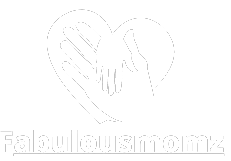Preoccupied Attachment Style: How It Affects Relationships

Attachment styles are crucial in shaping our relationships and interactions with others. Various factors influence how we connect and form bonds with others. In this article, we will explore the intricacies of preoccupied attachment style and its impact on relationships.
1. Introduction
Our early experiences with caregivers significantly shape our attachment style, which is a blueprint for how we approach and engage in relationships throughout our lives. Attachment styles are deeply ingrained patterns of relating to others based on the responsiveness and availability of our primary caregivers during infancy and childhood. The preoccupied attachment style, also known as anxious attachment, often stems from inconsistent or unpredictable caregiving experiences, leading to insecurities and excessive reliance on others for emotional validation.
2. Understanding Attachment Styles
Before delving into the preoccupied attachment style, it’s essential to have a broader understanding of attachment styles. The concept of attachment was initially introduced by psychologist John Bowlby, who highlighted its significance in forming emotional bonds. There are four primary attachment styles: secure, anxious/preoccupied, avoidant, and disorganized. Each style influences how individuals perceive and respond to closeness, emotional intimacy, and support from others.
3. What is Preoccupied Attachment Style?
A strong desire for closeness and fear of abandonment characterizes the preoccupied attachment style. Individuals with this attachment style tend to be overly dependent on their partners or close connections for reassurance and validation. They often experience heightened anxiety and insecurity within relationships, constantly seeking comfort and fearing rejection or abandonment. This attachment style can be demanding and emotionally intense and may lead to clinginess or possessive behaviors.
4. Signs and Characteristics of Preoccupied Attachment
Recognizing the signs and characteristics of a preoccupied attachment style can help individuals understand their relational patterns or those of their loved ones. Some common symptoms of preoccupied attachment include:
- Excessive need for reassurance and validation
- Fear of rejection or abandonment
- Hypersensitivity to perceived signs of disinterest or distancing
- Difficulty trusting and relying on oneself
- Strong emotional reactions to relationship dynamics
- Overanalyzing interactions and seeking constant affirmation
- Feeling unworthy or undeserving of love
- Difficulty establishing personal boundaries
- Tendency to become overly dependent on partners or friends for emotional support
5. The Impact of Preoccupied Attachment on Relationships
A preoccupied attachment style can impact relationships, leading to challenges and conflicts. The intense need for reassurance and validation can place excessive pressure on partners, creating an imbalanced dynamic. This attachment style may also lead to worrying, jealousy, and possessiveness. Individuals with preoccupied attachments may struggle with communicating their needs, fearing rejection or abandonment, resulting in a cycle of misunderstandings and emotional volatility.
6. Causes of Preoccupied Attachment Style
A preoccupied attachment style typically develops due to early experiences of inconsistent or inadequate caregiving. Some factors that can contribute to the development of preoccupied attachment include:
- Erratic or unpredictable responsiveness from caregivers
- Neglect or emotional unavailability during childhood
- Trauma or loss during formative years
- Parental mental health issues
- Growing up in an environment where emotions were dismissed or invalidated
7. Healing and Overcoming Preoccupied Attachment
Healing and overcoming preoccupied attachment is possible with self-reflection, support, and personal growth. Here are some strategies that can aid in the healing process:
- Cultivating self-awareness and understanding attachment patterns
- Engaging in therapy to explore underlying emotions and experiences
- Developing self-compassion and practicing self-soothing techniques
- Learning practical communication skills and expressing needs assertively
- Building a supportive network of friends and loved ones
- Engaging in activities that promote self-esteem and self-worth
- Working on personal development and self-growth outside of relationships
8. How to Support Someone with a Preoccupied Attachment
If you have a loved one with preoccupied attachment, there are ways you can provide support and understanding. Here are a few suggestions:
- Be patient and empathetic, acknowledging their fears and insecurities
- Offer consistent reassurance and validation
- Encourage open communication and create a safe space for sharing emotions
- Help them establish healthy boundaries and encourage self-reliance
- Suggest professional help or therapy if needed
9. Seeking Professional Help for Preoccupied Attachment
In some cases, seeking professional help from a therapist or counselor can benefit individuals with preoccupied attachment styles. A mental health professional can provide guidance, support, and evidence-based interventions to address attachment-related issues. Therapy can offer a safe environment to explore past experiences, heal emotional wounds, and develop healthier relationship patterns.
10. Conclusion
Understanding preoccupied attachment style is crucial for individuals seeking to improve their relationships and overall well-being. Recognizing the signs and impacts of preoccupied attachment, implementing self-help strategies, and seeking professional guidance when necessary, can lead to healing and developing healthier attachment patterns. Personal growth and positive change are achievable with the proper support and dedication.

